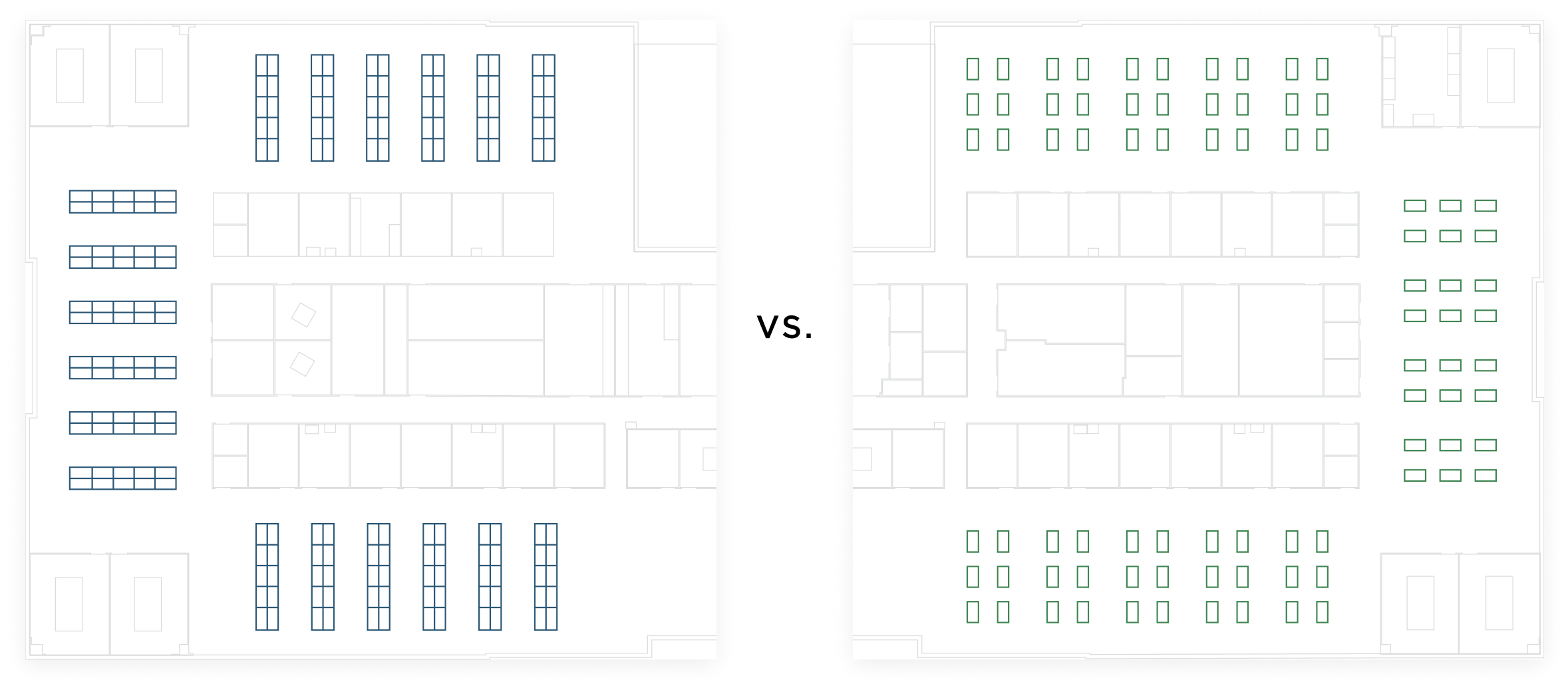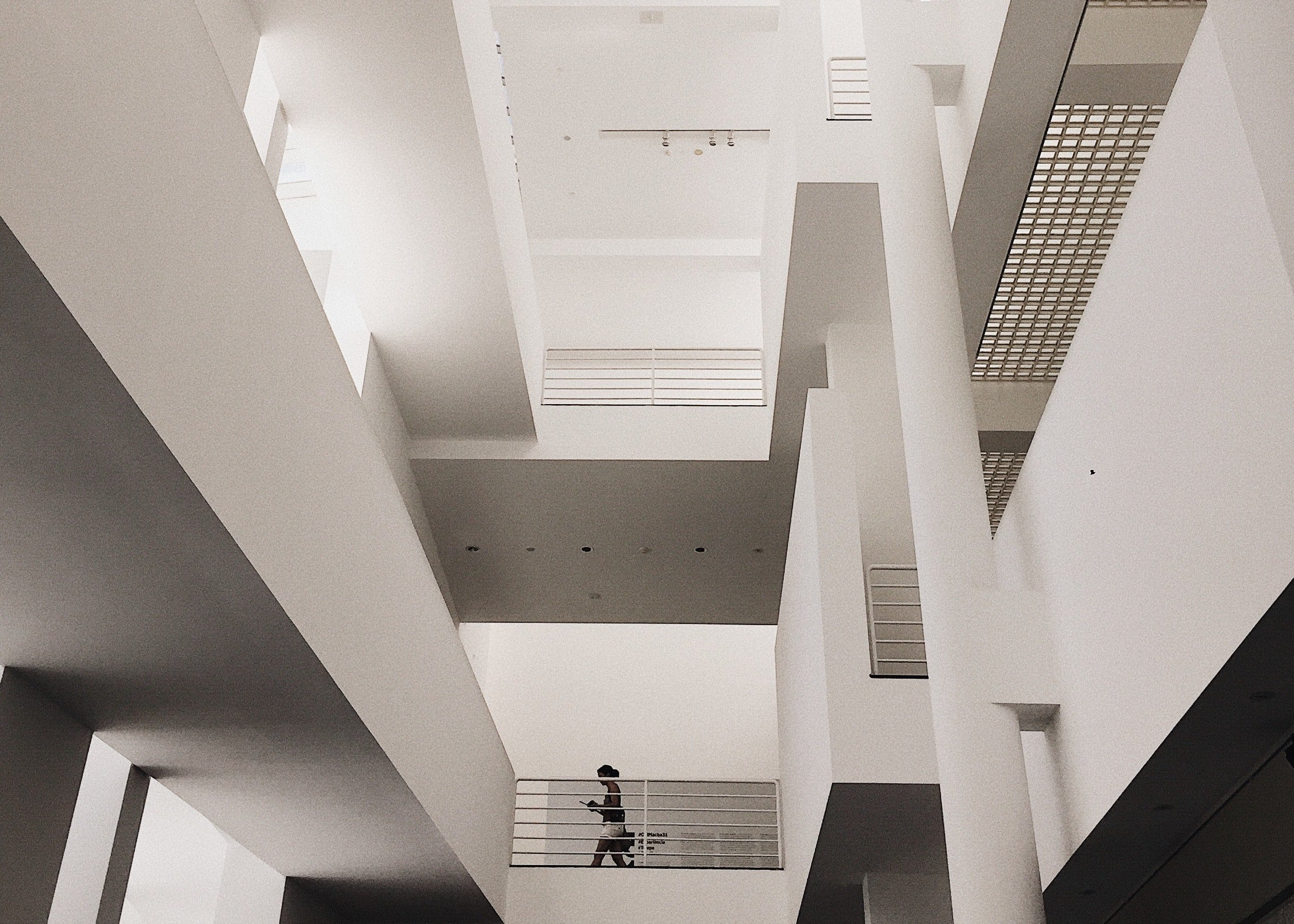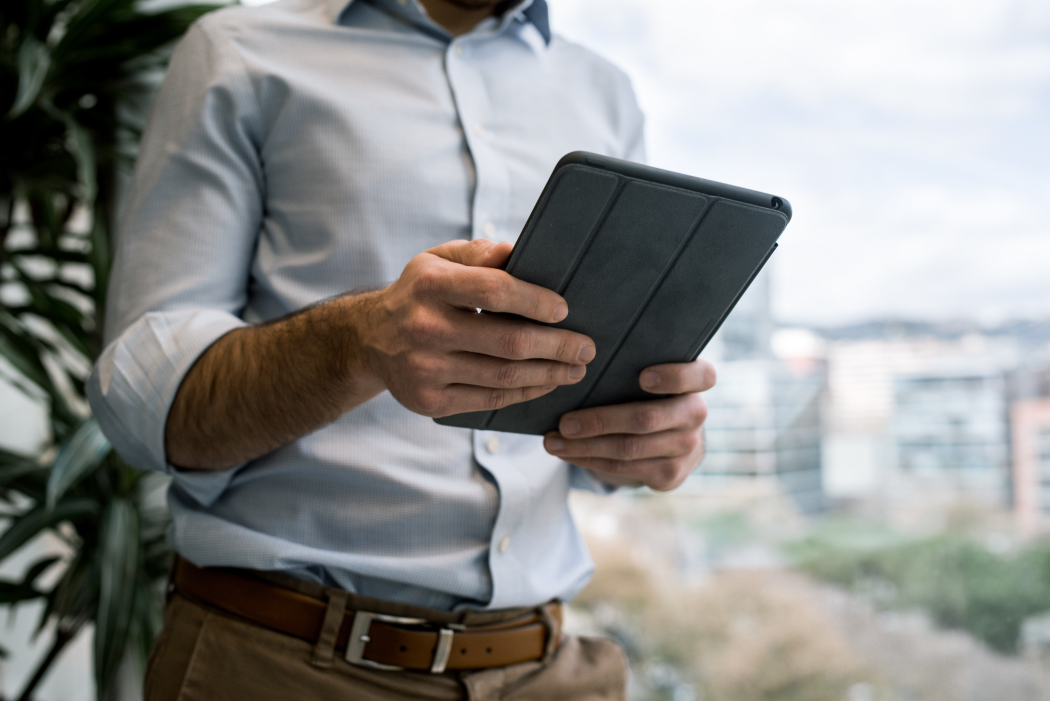Return to Resources
How Indoor Mapping Will Benefit Your Office
Jun 16, 2021
9 min read
Navigating indoor spaces can be difficult, especially in complex buildings. If you manage office buildings, this can pose a problem – without a proper way to navigate, your employees and visitors may get lost and end up wasting valuable time.
Indoor Map Use Cases: Office Management
To fix that problem, consider using indoor mapping solutions. Indoor maps in your office won’t just help employees and visitors navigate – they can also help in other aspects of your operations, from meeting room bookings to building management.
This article will explore the best uses for indoor mapping and how it can benefit your office.

Wayfinding
Wayfinding combines navigation aids like maps and signage to help someone make their way through a particular place. Many disciplines contribute to wayfinding, like architecture and graphic design. Good wayfinding doesn’t just direct a person from point A to point B – it also helps that person create a mental map of the building or complex.
In most urban settings like offices, shopping malls, and other complex structures, wayfinding is often done through signage and static building maps. Building managers put up signs that direct visitors to their destination in the simplest way possible and help them create a mental map of the area.
Recent developments in positioning technology have given rise to digital wayfinding. To complement existing wayfinding aids, you can now develop indoor maps that provide real-time directions to your building’s visitors.
Workplace Apps
One of the foremost benefits of indoor mapping solutions comes in the form of a workplace app. With mapping and positioning services for office spaces, employees can easily find their way around the office through real-time directions and navigation aids. Not only that, but the mobile application can also make meeting room and collaborative space bookings much more effortless.

Another prevalent problem in large office complexes is the difficulty of locating certain people, especially if they’re not at their usual desks. Through a location-sharing feature, employees can allow other app users to find them more easily – people won’t have to roam multiple floors to find the person they need to meet with.
Workplace Management
For office managers, indoor mapping solutions offer many advantages. Here are several ways indoor mapping can help make workplace management easier.
Employee/Department Search
In a huge office complex encompassing multiple floors or buildings, locating one person can be a nightmare. You may need to scroll through an unwieldy database containing every employee in the company, wasting a lot of time. And if they’re not at their desk, it’s even more challenging to find the person you need. With indoor mapping solutions, you can easily locate departments and even specific employees.
Display Out Of Order/Unavailable/Restricted Areas
When certain areas require maintenance or are otherwise unavailable, you’ll need to put up signs. However, signs can be misplaced or outdated – if they’re even placed at all. Indoor mapping can complement signage and ensure everyone in the building is notified of closed-off areas.
You can mark an area as unavailable on the employee app. With position tracking, you can even take it one step further by having the app notify them of unavailability when they walk past it.

Room Booking
It’s incredibly common for meeting rooms and other collaborative spaces to get double-booked. When this happens, it usually forces one party to search for another area, which is a massive waste of time.
An indoor mapping platform can fix this by acting as a centralized room booking system. Once someone books a room, it will be marked as such across all employee apps. If an employee enters a room that’s already booked, they’ll immediately be notified about the previous booking.
Expedite Onboarding and Familiarity with Space
The onboarding process usually involves taking the new hires on a tour of the entire building. This process can take hours in incredibly complex facilities and may disrupt the work atmosphere in the rooms they visit.
Using an indoor mapping solution, you can automate this part of the onboarding process. You won’t need to assign a staff member to be their mentor for the day, and it frees the onboarding team up to focus on more essential parts of the process.
Workplace Safety
It can be challenging to manage the safety of employees in a large office complex. Fortunately, indoor mapping solutions can help enforce employee health and safety protocols easier. Here are some ways that indoor positioning systems can make your office safer, especially in a post-pandemic world.

Notifications and Alerts (Alarms)
Installing alarm systems in the office is tricky work. The sound may travel well in hallways, but there may be well-insulated rooms and don't let sound in. An emergency like a fire or natural disaster can put many of your employees at risk.
Implementing an alarm notification system on employee apps can add another way to warn your personnel. If your employee can’t hear the alarm from where they are, they will still receive a notification through their app – allowing them to follow emergency procedures promptly.
Contact Monitoring
An indoor intelligence solution can help your office reopen safely. When employees start their shift on-site, the app will start collecting their indoor positioning data. Because this positioning data includes the distance between devices, it can log all devices that they were in contact with during their workday.
If one of your employees contracts COVID-19, you can see which devices were in contact with them leading up to their positive diagnosis. This takes the guesswork out of contact tracing and increases operational efficiencies.

Workplace Control
Indoor mapping in smart buildings can improve hazard control. You can mark which areas of your workplace require protective equipment to enter, as well as regulate who can enter these areas. If hazardous materials enter a location by accident, you can also notify employees that the site in question is off-limits until the building hazards are cleaned up.
Social Distancing Mapping
Ensuring that social distancing protocols are enacted takes time and effort, but indoor mapping software makes it extremely easy. The software can help you ensure that room occupancy limits are followed, avoiding dangerous concentrations of people.
For example, if a room is limited to ten occupants and there are already ten employees in the room, the facilities management staff can lock the doors remotely. It can also notify potential visitors that the room is now off-limits to new people. This prevents more people from entering the room and breaking social distancing protocols.
Service Requests
With indoor mapping, maintaining essential equipment can be made more efficient. Employees can put in service requests immediately when they need it, saving them the time and effort of sending emails to facilities teams.
On the building manager’s side, these requests are immediately received and marked on the map. This way, they can mark the equipment as “for maintenance” and assign building maintenance personnel immediately to resolve the issue.
This convenience extends to more than just repair requests. Employees can also ask for assistance in other day-to-day tasks. For example, an employee can ask for AV support or request extra seating.

Operations and Facility Management
Indoor mapping solutions can streamline the building management process. By simplifying these often time-consuming processes, building managers can spend more time working on more essential tasks.
Building Management
When you close the building down for the day, you need to turn off the lights and HVAC to save energy. However, sometimes employees may request to use certain rooms after hours for various reasons.
With indoor mapping software in place, you can automate this process. You can schedule which rooms will be used for overtime and when they plan to finish, so lights and HVAC can be turned off automatically. You can also use this feature to turn the lights and HVAC off in unused rooms, helping you save on energy costs.
Resource Planning
To facilitate quick emergency responses, you need to plan where to place fire extinguishers and first aid supplies. You also need to plan where to place security cameras to maximize coverage.

Indoor mapping technology can help you plan how to place these safety and security resources properly. For example, you can analyze foot traffic data to find out the perfect spot to place a first aid kit. You can also place fire extinguishers in commonly-frequented areas that are near potential fire hazards and essential equipment.
Space Planning
To prepare for future company growth, you may need to create more workspaces to accommodate new hires. Insights from indoor mapping data can help you build new spaces according to your employee’s habits. And even if you’re not planning to build new spaces, the data can help you modify seating arrangements to maximize your space more effectively.

For example, suppose your employees often hold impromptu meetings in the cafeteria or lounge because of the lack of available rooms. In that case, you may need to consider building a new meeting space.
Computational Fluid Dynamic (CFD) Data For Air Flow
Good airflow is essential in any indoor space, and offices are no exception. Because the temperature, humidity, and air cleanness often fluctuate through the year, you need to adjust your HVAC to ensure comfort year-round.
By managing your airflow well, you can also prevent the spread of COVID-19. Since the virus is airborne, you need to ensure that those particles won’t linger in your workspaces and potentially infect employees.
Your indoor mapping software can help simulate different air conditions so you can make HVAC adjustments properly.
Space Utilization and Analytics
In most commercial spaces, you have limited space to work with. However, some areas in the office may not be used as often as others, leading to valuable square footage being idle. Tracking your employees’ habits using positioning apps helps you analyze this.
Using the data gained from the employee apps, you can examine their habits and pinpoint spaces that aren’t being used well. With information on which spaces are being wasted, you can repurpose them into something more useful.
Mappedin: The Best Choice for Office Mapping
Whether you’re looking to implement indoor mapping for small venues or large spaces, retail spaces like shopping malls can also benefit from indoor mapping to enhance efficiency and visitor experiences. And they’re not just building navigation aids that help employees go from the lobby to their workspace anymore. With indoor mapping solutions, you can streamline many processes across the company, from onboarding to office space planning.
To streamline the daily operations of your business, Mappedin is here to help you automate office management. Moreover, our workplace safety features will help keep your employees healthy and safe!


